AARP Hearing Center

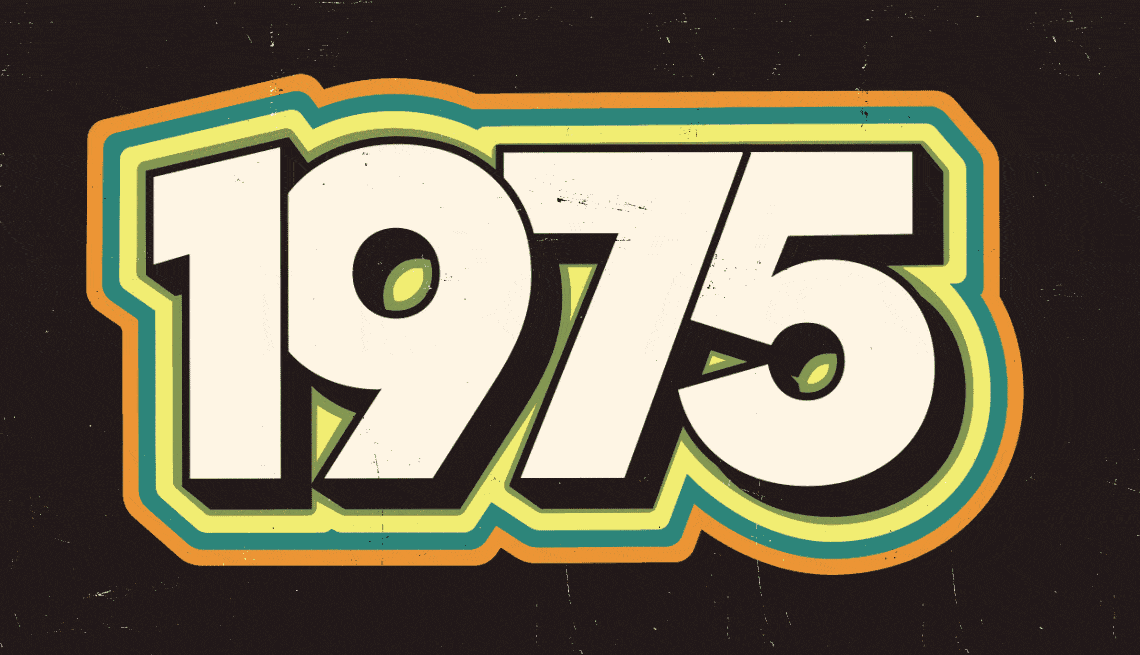
In 1975, the counterculture became the culture. Youth culture was being commodified and camp-ified in mood rings and pet rocks. Colors were bold, hair was wild, disco ran the dance floors and movies were spectacles. Politics may have felt unmoored, but people’s reaction to those problems was to ... do the hustle. Read on for our list of 50 of 1975’s trendsetting people, events and things:

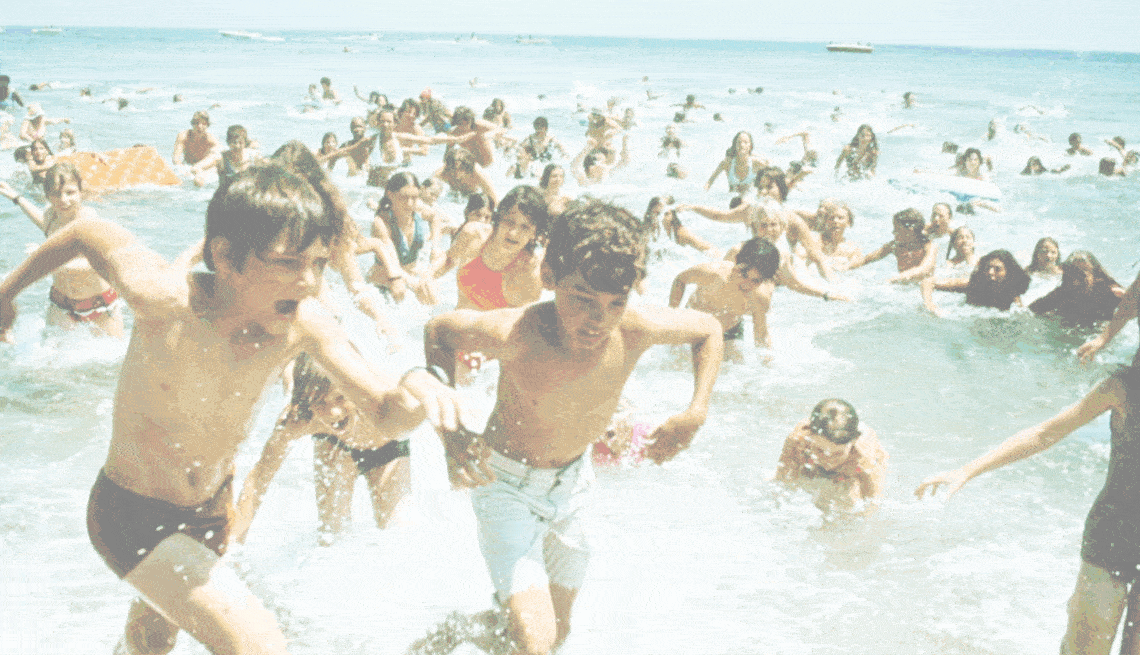
Big flicks
The year brought to the big screen such hits as the musical Tommy, The Man Who Would Be King and the indelible documentary Grey Gardens. Here are six more movies that wowed us.
Jaws: It was up for best picture and won three other Oscars, but director Steven Spielberg, 78, was not even nominated. He just needed a bigger boat: 1994’s Schindler’s List won him the award.
The Rocky Horror Picture Show: Thanks to midnight showings involving audience participation, it’s the longest-running theatrical release in history — though the original audience now prefers an early bird deal. The tagline for the movie poster, featuring Playboy model Lorelei Shark’s lips, read, “A Different Set of Jaws.”
Mahogany: Motown founder Berry Gordy, 95, who produced this romantic drama starring Diana Ross, 80, and Billy Dee Williams, 87, fired the director and directed it himself. (Luckily, he did not do the same thing with Stevie Wonder, 74, on his albums.)
One Flew Over the Cuckoo’s Nest: It’s one of three (1934’s It Happened One Night; 1991’s The Silence of the Lambs) movies to win all five major categories at the Oscars. Kirk Douglas bought the rights to the novel in 1962 so he could star in the film, but by the time it finally got made 13 years later, Jack Nicholson, 87, got the role. The novel’s author thought Gene Hackman, 95, should star. No one suggested Jerry Lewis.
Dog Day Afternoon: Al Pacino, 84, on the suggestion of the assistant director, ad-libbed yelling “Attica” to the crowd of extras and people who had gathered on the street to watch, leading them to chant the word. It would have been a very different movie if he’d suggested Pacino yell “What song is it you wanna hear?”
Mandingo: Boxer Ken Norton gave up a $250,000 boxing purse so he could play an enslaved person in this melodrama. He got fairer reviews from movie critics than he did from the judges in his final fight with Muhammad Ali.


On the playlist
Yes, hard rock continued through the '70s, but dance music killed, ballads continued to win audiences, and even a ribald comedy album snagged a Grammy.
Born to Run by Bruce Springsteen, 75: After two albums that weren’t hits, Springsteen’s third try made him a star. This one took 14 months to record, six of which were just spent on the title track. Baby, he was born to be a perfectionist.
The Hustle by Van McCoy: The six-step dance, created in the Bronx, was already popular in New York City when producer and songwriter Van McCoy wrote a song about it. He did not spend a lot of time on the lyrics.
Fleetwood Mac by Fleetwood Mac: The band’s 10th lineup, this one adding the couple Lindsey Buckingham, 75, and Stevie Nicks, 76, was the most successful. It was not as successful romantically.
…Is It Something I Said? by Richard Pryor: This comedy album debuted Pryor’s Mudbone character, a common-sense philosopher alcoholic originally from Tupelo, Mississippi.
KC and The Sunshine Band by KC and The Sunshine Band: The band’s eponymous second album included the disco hits “Get Down Tonight,” “That’s the Way (I Like It)”and “Boogie Shoes.” There are so many members of this band that it’s conceivable they have not all met.
Love Will Keep Us Together by Captain & Tennille: The song was cowritten and recorded in 1973 by Neil Sedaka, 85. The duo Mac and Katie Kissoon recorded it again the same year. But this version, by former Beach Boys keyboardist Daryl “Captain” Dragon and his wife Toni Tenille, 84, reached #1 on Billboard’s top singles of the year. During the fadeout, you can hear Captain sing, “Sedaka is back.”

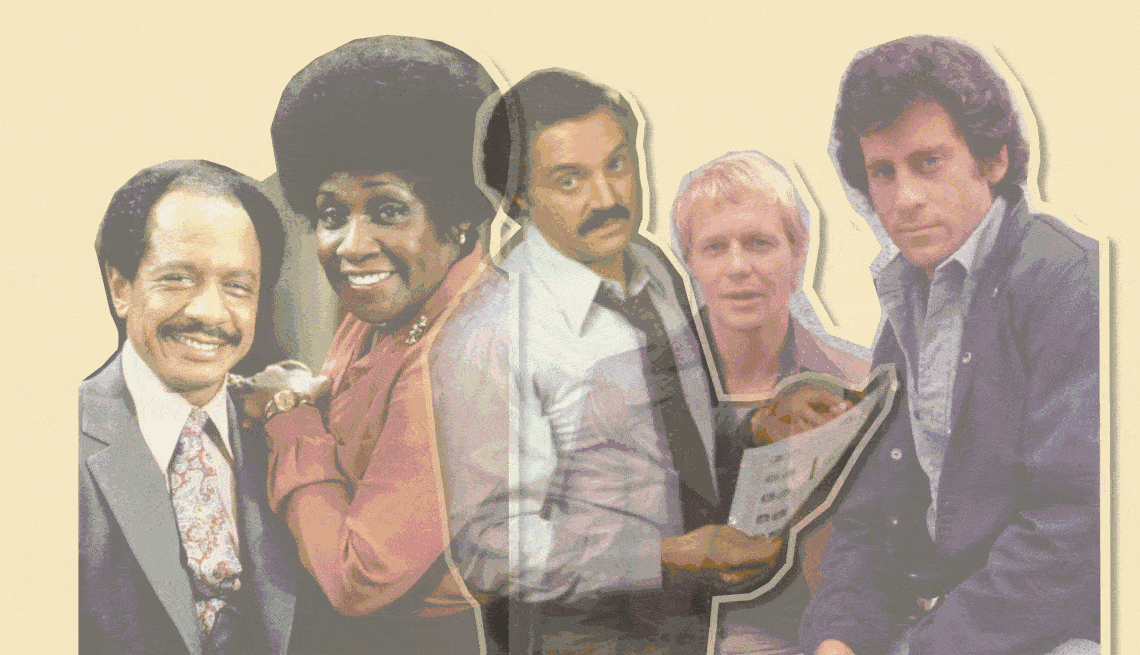
TV debuts
Sitcoms continued to rule the roost, even as action series and an instantly classic morning news show came onto the scene.
Welcome Back, Kotter: Based on Gabe Kaplan’s, 79, standup routines about his Brooklyn high school, this show started the career of John Travolta, 71, and the lunches of many children who opened lunch boxes adorned with the phrase “Up your nose with a rubber hose.” The sitcom was going to be called “Kotter” until John Sebastian (lead singer of the Lovin’ Spoonful), 80, wrote the theme song, which leaned on the phrase “welcome back.” The song hit #1 a year later.
The Jeffersons: Norman Lear came up with this All In The Family spinoff about Archie Bunker’s next-door neighbors after an office meeting with the Black Panthers who complained that, while they enjoyed his show Good Times, TV lacked Black characters who weren’t “dirt poor.”
Barney Miller: The sitcom, which almost never ventures out of the detective’s office in New York’s Greenwich Village, is often cited as the most realistic police show by cops, including actor Dennis Farina, who had been in the Chicago PD.
Starsky & Hutch: Paul Michael Glaser, 81, who played detective Sergeant David Starsky, hated the red-and-white-striped Ford Gran Torino because he thought undercover cops would never drive a flashy car. He purposely drove the car he called a “striped tomato” hard into curbs.
Good Morning America: After seven years as the show’s meteorologist, John Coleman left to be a cofounder of The Weather Channel. Many people thought this was a stupid idea. Most of them did not become nearly as rich as John Coleman.

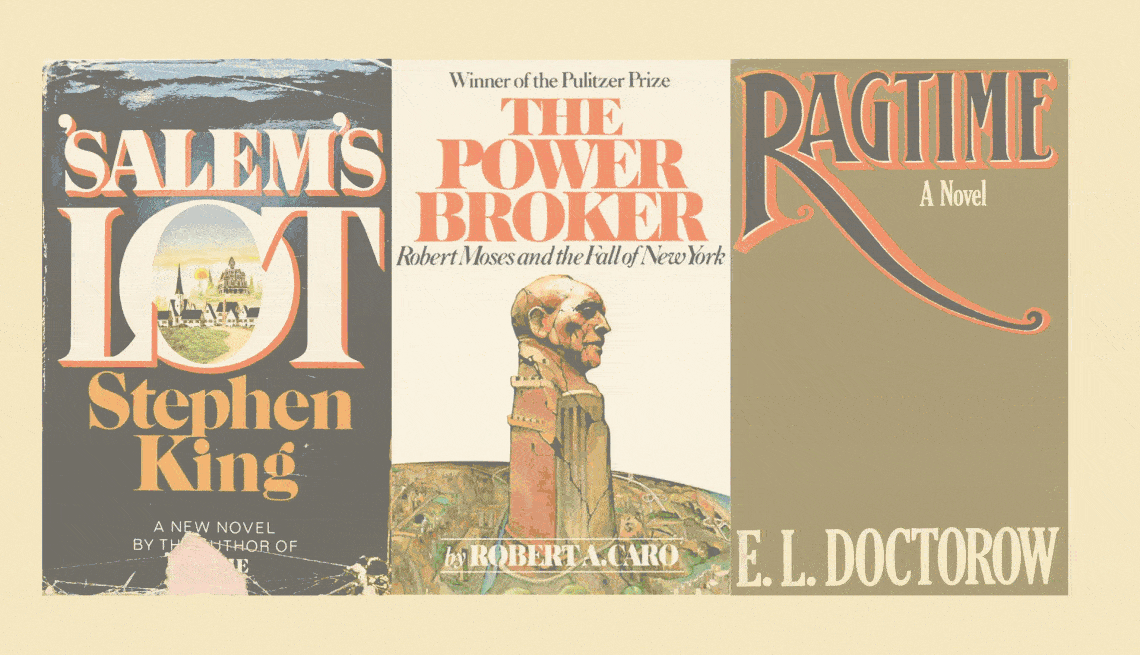
Blockbuster books
Historical fiction, big-time biography and horror ruled the bestseller lists.
Shōgun by James Clavell: The once-World War II prisoner of war Clavell had time to write movies (The Fly), direct films (To Sir, With Love), author the six-volume Asian Saga, have two daughters with his wife, and father another daughter through an affair with Marlon Brando’s assistant. (Brando adopted her.)
Tinker Tailor Soldier Spy by John le Carré: The title is from the children’s rhyme, “Tinker, tailor, soldier, sailor, rich man, poor man, beggarman, thie,f” which also provided the title for 1969 novel Rich Man, Poor Man and the 1977 novel Beggarman, Thief — but not the novel Tinker Thief, which doesn’t exist but should.
Ragtime by E.L Doctorow: This historical novel, which takes place in New York City between 1902 and 1915, has a scene in which Freud and Jung ride the Tunnel of Love in Coney Island together. Sometimes, a tunnel is just a tunnel. But not this time.
Salem’s Lot by Stephen King, 77: Four years later, King’s second novel was turned into a CBS miniseries starring David Soul of Starsky & Hutch. (See how I connected the dots there?)
Looking for Mr. Goodbar by Judith Rossner: Based on the real-life murder of a schoolteacher by a man she brought home from a singles bar, the novel was Lifetime before Lifetime.

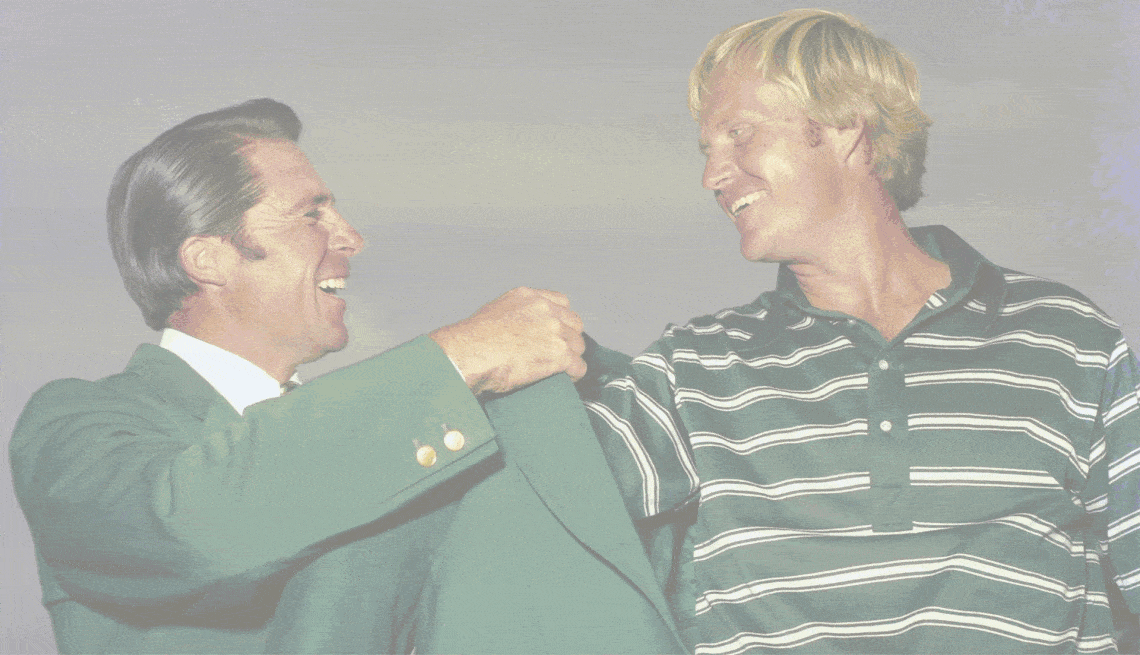
Sports drama
Boxing, golf, football and baseball drama — what's new?
Jack Nicklaus, 85, wins fifth Masters: He broke Arnold Palmer’s record of four wins. In 1986, this new record would fall. To Nicklaus, who won his sixth.
The Thrilla in Manila: The third and final fight between Muhammad Ali and Joe Frazier was nicknamed because, in a pre-fight interview, Ali punched a small rubber toy gorilla he pulled out of his pocket and said, “It will be a killa and a thrilla and a chilla when I get the Gorilla in Manila.”
World Series — Red Sox vs. Reds: In what is considered a classic series, the 12-inning Game 6 ended when Boston Red Sox catcher Carlton Fisk, 77, hit a home run by willing it away from foul territory by waving his hands like a child bowler. The Sox lost the next game, and the series, to the Cincinnati Reds.
Super Bowl IX — Steelers vs. Vikings: The Pittsburgh Steelers’ defense, called “The Steel Curtain,” defeated the far-dumber-nicknamed defense of the Minnesota Vikings, “The Purple People Eaters.”
































































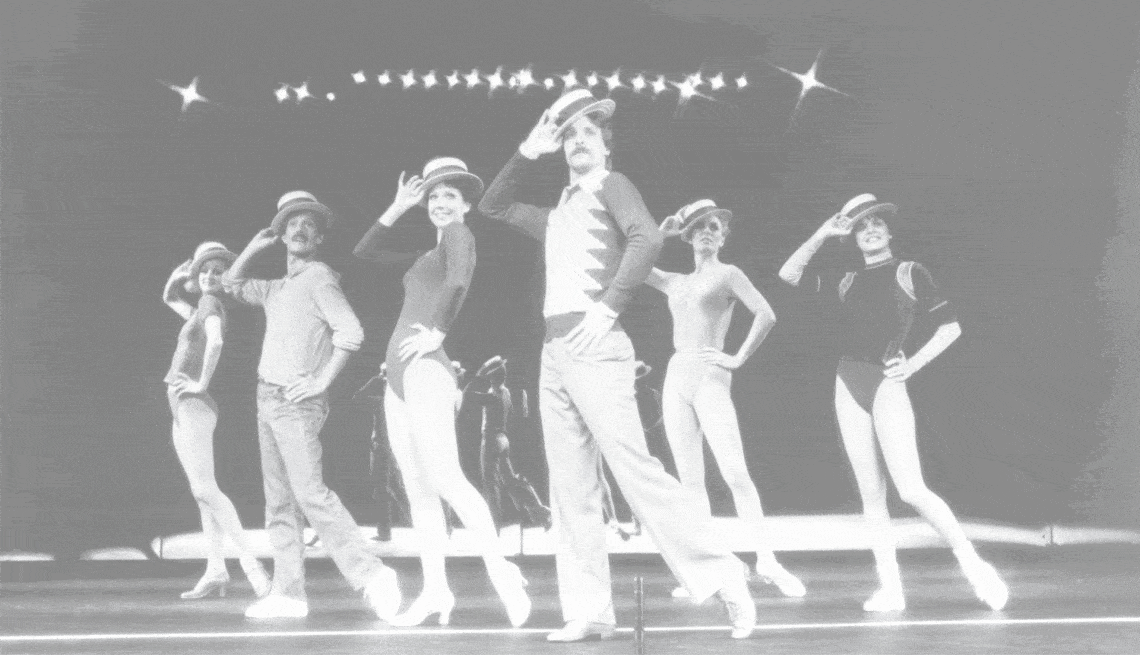





You Might Also Like
Rosanne Cash Looks Back To Her Dad and Forward to 70
In a wide-ranging interview, the singer-songwriter, 69, gets into life with her parents, finding normal, and the importance of legacy
Our Search for Lost History
John Mills researches people who were enslaved—and shares with their descendants
'Finding Your Roots' Host Shares Celebs' Family Secrets (and How He Made Sharon Stone Cry)
Henry Louis Gates, Jr. gives AARP a sneak preview of his ancestry show's 2025 season